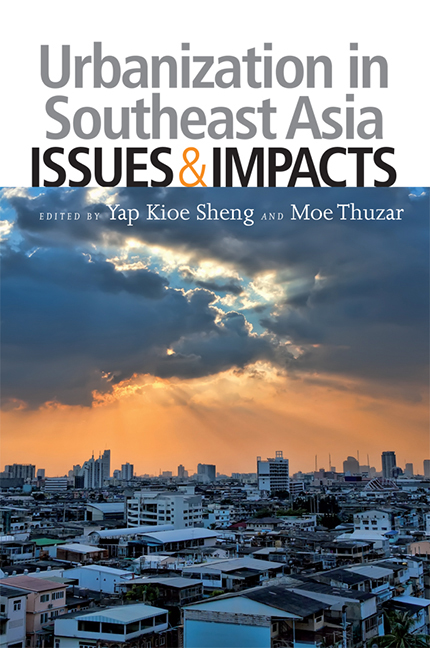Book contents
- Frontmatter
- Contents
- Message from Head, ASEAN Studies Centre
- Message from Director, Centre for Liveable Cities
- About the Contributors
- Introduction
- Urbanization in Southeast Asian Countries: Recommendations
- 1 The Challenges of Promoting Productive, Inclusive and Sustainable Urbanization
- Cities as Engines of Development
- Inclusive Cities
- 6 Addressing Urban Poverty in ASEAN: Diversity of Conditions and Responses, Unity of Purpose
- 7 The HDB Community: A Work in Progress
- 8 Rural-Urban and Intra-Urban Linkages in Southeast Asia: Old Field, New Dynamics
- Cities and the Environment
- Governance, Decentralization, and Urbanization
- Urbanization from an ASEAN Perspective
- Index
8 - Rural-Urban and Intra-Urban Linkages in Southeast Asia: Old Field, New Dynamics
from Inclusive Cities
Published online by Cambridge University Press: 21 October 2015
- Frontmatter
- Contents
- Message from Head, ASEAN Studies Centre
- Message from Director, Centre for Liveable Cities
- About the Contributors
- Introduction
- Urbanization in Southeast Asian Countries: Recommendations
- 1 The Challenges of Promoting Productive, Inclusive and Sustainable Urbanization
- Cities as Engines of Development
- Inclusive Cities
- 6 Addressing Urban Poverty in ASEAN: Diversity of Conditions and Responses, Unity of Purpose
- 7 The HDB Community: A Work in Progress
- 8 Rural-Urban and Intra-Urban Linkages in Southeast Asia: Old Field, New Dynamics
- Cities and the Environment
- Governance, Decentralization, and Urbanization
- Urbanization from an ASEAN Perspective
- Index
Summary
The topic of rural-urban dynamics in ASEAN is hardly new; in fact, it has been a mainstay of both academic and public policy debate in the region for at least six decades. What is new is that the context has changed dramatically over the last ten to twenty years. This chapter revisits ASEAN's rural–urban dynamics from such a perspective. What is new in terms of the context of rural–urban dynamics can be summarized as follows:
1. The growth of peri-urban areas: The rise of manufacturing in several countries in Southeast Asia has led to the growth of peri-urban areas, which are an important destination for rural migrants.
2. Increase in cross-border trade under the ASEAN Free Trade Area: Urban, peri-urban, and rural areas are increasingly affected by external forces such as the increase in cross-border trade. While there can be winners or losers, the impact of cross-border trade is generally unfavourable for rural areas.
3. Increase in connectivity: Rural and urban areas are much better connected in communication and transportation terms as a result of the rise of low-cost powerful communications and transportation systems. Cellular phones are now ubiquitous in ASEAN countries; information circulates at speeds unthought of ten years ago, with 3G networks likely to become widely accessible, thereby further increasing communication potential between rural and urban areas, including among urban migrants and the rural poor. Transport is similarly becoming less expensive, including travel by low-cost airlines serving smaller centres. This means that migration is less jarring, while information on most markets, for example, for urban labour and farm prices, is much more efficient.
4. The rise of regional migration: While labour mobility is relatively more restricted than the flow of goods in ASEAN, the reality is that residents of ASEAN increasingly consider, and often act on, regional labour options for the sake of higher standards of living, or as refugees. Cross border migration for employment is becoming widespread throughout the region; for example, Cambodians staff tourist facilities in Koh Chang, Thailand. Thus rural-urban linkages may be between a rural area in one country and an urban one in another — complementing traditional rural-urban linkages which tend to be with the nearest large city in the same country.
- Type
- Chapter
- Information
- Urbanization in Southeast AsiaIssues and Impacts, pp. 205 - 226Publisher: ISEAS–Yusof Ishak InstitutePrint publication year: 2012



